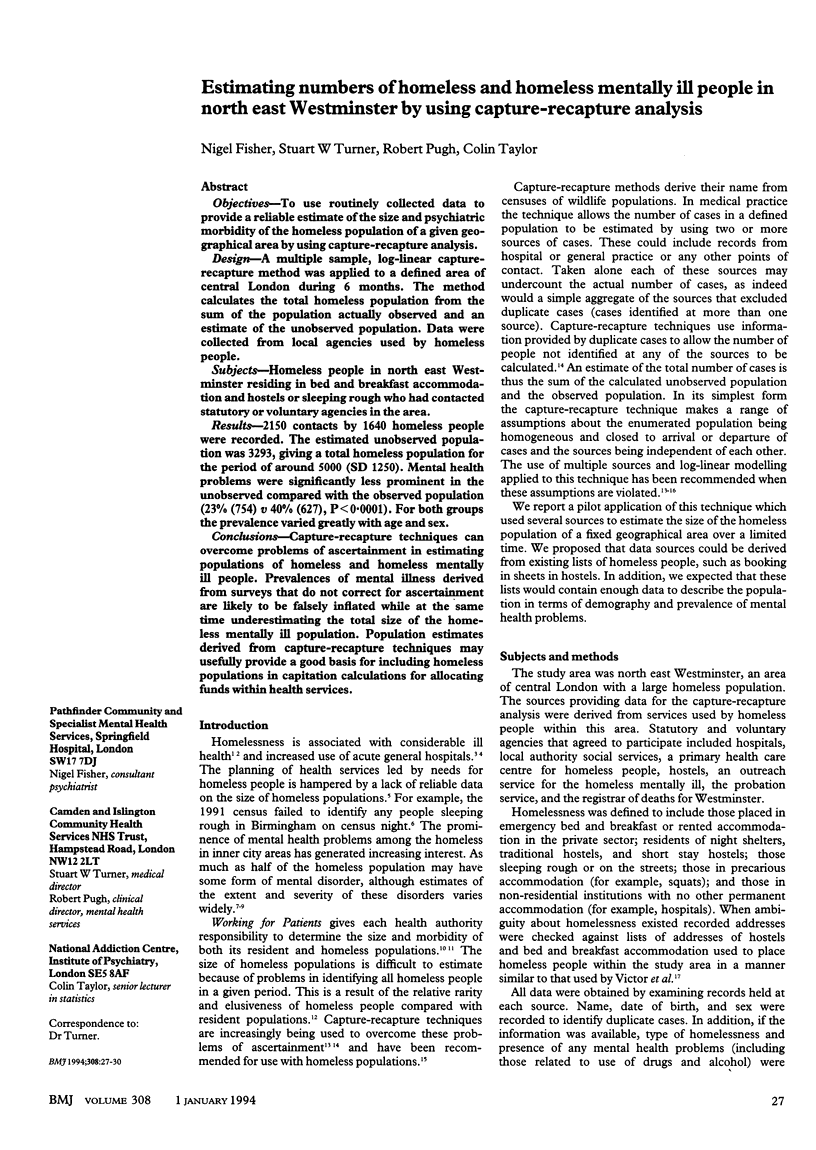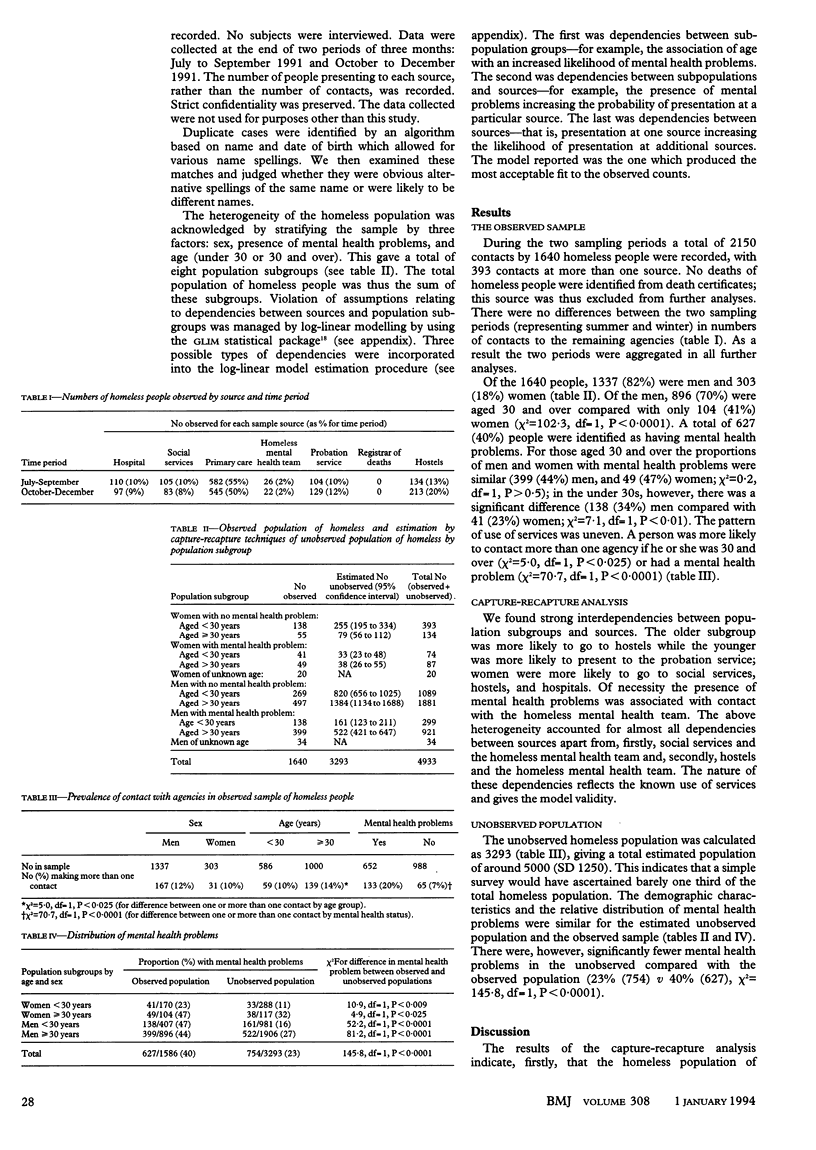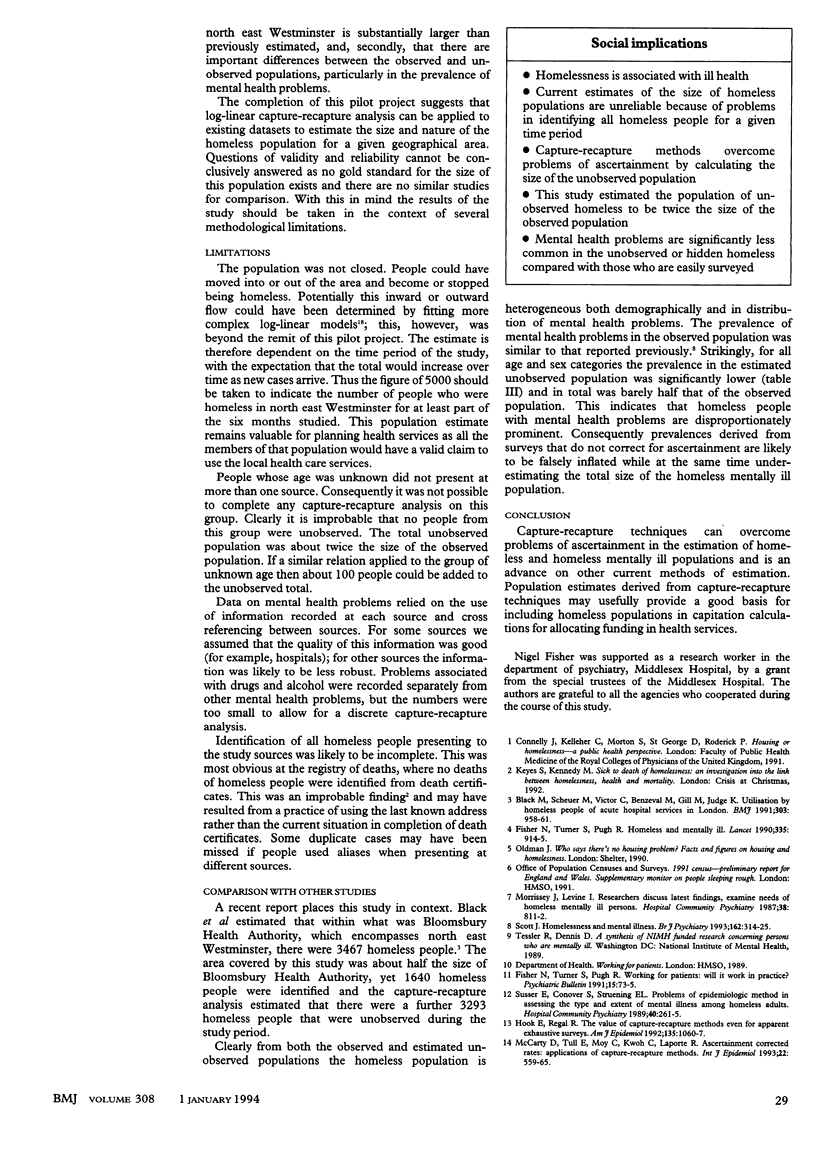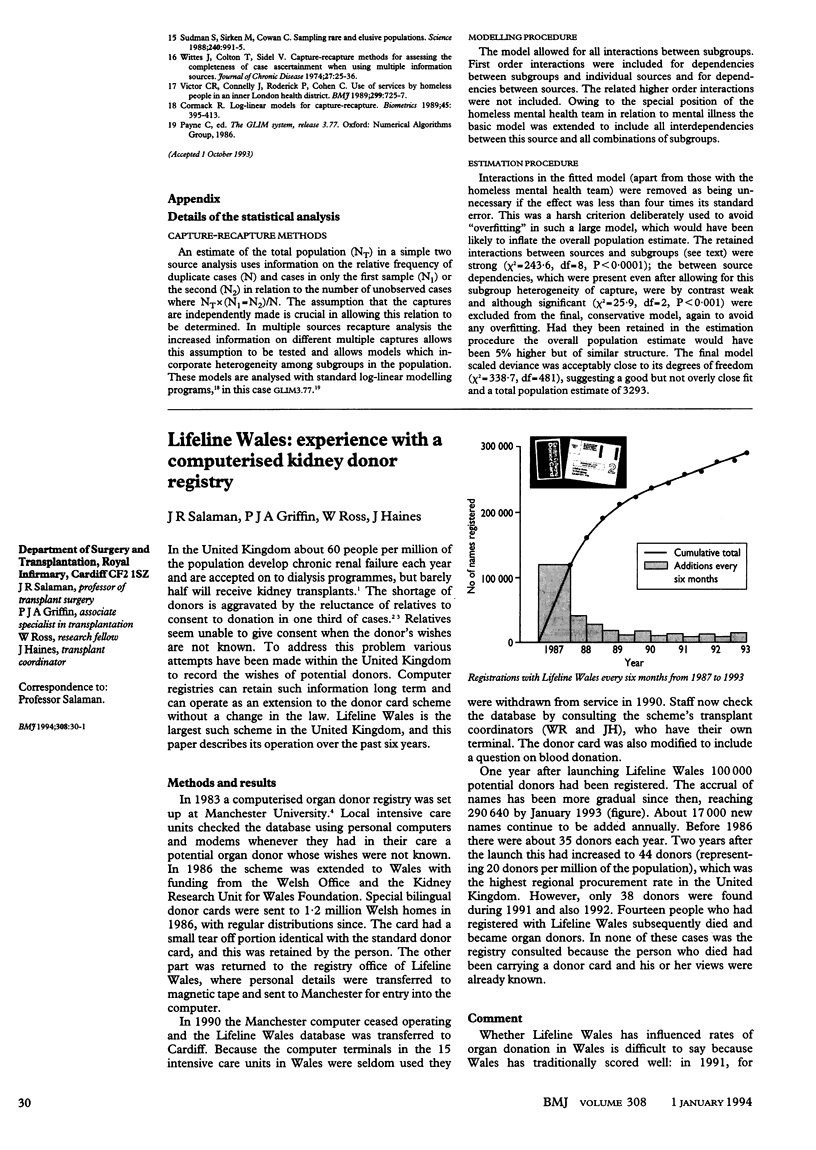Abstract
OBJECTIVES--To use routinely collected data to provide a reliable estimate of the size and psychiatric morbidity of the homeless population of a given geographical area by using capture-recapture analysis. DESIGN--A multiple sample, log-linear capture-recapture method was applied to a defined area of central London during 6 months. The method calculates the total homeless population from the sum of the population actually observed and an estimate of the unobserved population. Data were collected from local agencies used by homeless people. SUBJECTS--Homeless people in north east Westminster residing in bed and breakfast accommodation and hotels or sleeping rough who had contacted statutory or voluntary agencies in the area. RESULTS--2150 contacts by 1640 homeless people were recorded. The estimated unobserved population was 3293, giving a total homeless population for the period of around 5000 (SD 1250). Mental health problems were significantly less prominent in the unobserved compared with the observed population (23% (754) v 40% (627), P < 0.0001). For both groups the prevalence varied greatly with age and sex. CONCLUSIONS--Capture-recapture techniques can overcome problems of ascertainment in estimating populations of homeless and homeless mentally ill people. Prevalences of mental illness derived from surveys that do not correct for ascertainment are likely to be falsely inflated while at the same time underestimating the total size of the homeless mentally ill population. Population estimates derived from capture-recapture techniques may usefully provide a good basis for including homeless populations in capitation calculations for allocating funds within health services.
Full text
PDF



Selected References
These references are in PubMed. This may not be the complete list of references from this article.
- Black M. E., Scheuer M. A., Victor C., Benzeval M., Gill M., Judge K. Utilisation by homeless people of acute hospital services in London. BMJ. 1991 Oct 19;303(6808):958–961. doi: 10.1136/bmj.303.6808.958. [DOI] [PMC free article] [PubMed] [Google Scholar]
- Hook E. B., Regal R. R. The value of capture-recapture methods even for apparent exhaustive surveys. The need for adjustment for source of ascertainment intersection in attempted complete prevalence studies. Am J Epidemiol. 1992 May 1;135(9):1060–1067. doi: 10.1093/oxfordjournals.aje.a116400. [DOI] [PubMed] [Google Scholar]
- Morrissey J. P., Levine I. S. Researchers discuss latest findings, examine needs of homeless mentally ill persons. Hosp Community Psychiatry. 1987 Aug;38(8):811–812. doi: 10.1176/ps.38.8.811. [DOI] [PubMed] [Google Scholar]
- Scott J. Homelessness and mental illness. Br J Psychiatry. 1993 Mar;162:314–324. doi: 10.1192/bjp.162.3.314. [DOI] [PubMed] [Google Scholar]
- Sudman S., Sirken M. G., Cowan C. D. Sampling rare and elusive populations. Science. 1988 May 20;240(4855):991–996. doi: 10.1126/science.240.4855.991. [DOI] [PubMed] [Google Scholar]
- Susser E., Conover S., Struening E. L. Problems of epidemiologic method in assessing the type and extent of mental illness among homeless adults. Hosp Community Psychiatry. 1989 Mar;40(3):261–265. doi: 10.1176/ps.40.3.261. [DOI] [PubMed] [Google Scholar]
- Victor C. R., Connelly J., Roderick P., Cohen C. Use of hospital services by homeless families in an inner London health district. BMJ. 1989 Sep 16;299(6701):725–727. doi: 10.1136/bmj.299.6701.725. [DOI] [PMC free article] [PubMed] [Google Scholar]
- Wittes J. T., Colton T., Sidel V. W. Capture-recapture methods for assessing the completeness of case ascertainment when using multiple information sources. J Chronic Dis. 1974 Feb;27(1):25–36. doi: 10.1016/0021-9681(74)90005-8. [DOI] [PubMed] [Google Scholar]


